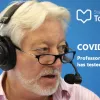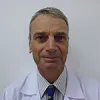The importance of NIRS and echocardiograms | Euroanesthesia 2023
In this Top Med Talk podcast, Desiree Chappell, Monty Mythen and Andy Cumpstey speak with their guest Sean Bennet, cardiac anesthetist and intensivist at University Hospital Southampton NHS Foundation Trust.
Show Notes
Transcript
Speakers
In this Top Med Talk podcast, Desiree Chappell, Monty Mythen and Andy Cumpstey speak with their guest Sean Bennet, cardiac anesthetist and intensivist at University Hospital Southampton NHS Foundation Trust.
Top Med Talk.
Desiree Chappell: Well, hello and welcome to Top Med Talk. We are here at the annual meeting of the European Society of Anesthesiology and Intensive Care Euro Anesthesia 2023 in Glasgow, Scotland. I'm Desiree Chappell, your host. I'm joined by Monty Mythen and my co host. Hello Monty.
Monty Mythen: As always, good to be here, Desiree.
Desiree Chappell: It is good to be here. Day two, it's been a great meeting. We're here on the GE HealthCare booth. They have been a generous sponsor to Top Med Talk, helping keep Top Med Talk free and open access to the world.
Monty Mythen: That's our mission. We've managed to manage that since the beginning. No one's ever had to pay to access Top Med Talk and that's because of the generosity of people giving their time like we are now. But there are costs involved and most of those costs are covered by grants, unrestricted grants given by industry partners and others. But the industry partners give the lion share.
Desiree Chappell: Yes, we want to thank them very much for that. Monty, we will go over 2 million downloads, I think in the next couple days.
Monty Mythen: It looks like we are very close in over 100 countries. I think actually if we wanted to cheat, we could count the other because we do these other little sideline things like the Editor's Choice and the Perioperative Coach. We're over 2 million. But we want to get 2 million on the main for Top Med Talk. And we are so close.
Desiree Chappell: We are so close. So do please have a listen if you like what you hear today at topmedtalk.com or on your podcatcher, you can find more of our podcasts and really put us over the top, I think is what we're going for. Well, here on Top Med Talk, Monty and I usually are at the helm, but we have a new voice on Top Med Talk. Andy, come see. Hello Andy.
Andy Cumpstey: Hi Desiree. Great to be here. And I have to say, with Monty rapping, how can we not go over the 2 million downloads? We have to get over that.
Desiree Chappell: Andy, I love you. I love it. Andy, it's been a fantastic meeting so far and lots of good content. The presentations have been wonderful. The conversations here in the exhibit hall have just been fantastic, haven't they?
Andy Cumpstey: Absolutely. Both on our podcasting stations, but also just in the corridors. So there are people around the exhibition hall. There's this kind of excitement around the room. Isn't everyone's getting back out doing these conferences again. And we keep saying but it's been a really busy, exciting conference. It feels like everything's getting back to normal.
Monty Mythen: We should probably start to give a shout out that the next one. Next year. It's always around this time of year.
Desiree Chappell: It is. It's in Munich.
Monty Mythen: Munich, yeah. And it's always around that back end of May, just right at the beginning of June, so fixed in the diary. That sort of aligns with some of the European holidays for the kids and stuff.
Desiree Chappell: Yeah, works out really well. So Euro, anesthesia 2024 in Munich. Do check that out. Well, this is one of our last conversations that we're having at the meeting this year, and our guest with us this afternoon is Dr. Sean Bennett. Dr. Bennettt, thank you so much for joining us today.
Sean Bennett: You're welcome.
Desiree Chappell: Yeah. So, for our listeners, give us a little bit more about your background, where you're from, where you're currently practicing.
Sean Bennett: Sean Bennett, cardiac Anesthesia and Intensivist for many years, my main work area was up in Yorkshire at Castle Hill Hospital. 20 OD years there, actually. I went oversseas for quite a while and started a new clinic in the Middle East, which was freat fun to do. And then I came bacj to Enfgland and I´ve been working in the South of England. Bit of a shock coming back to the NHS in England. I won't deny it.
It's very nice coming back to a big meeting after the lockdown because the whole thing has really upped its game. I mean, the stands are fantastic, the technology that's here is fantastic. There's as much going on around here as there is in the lecture rooms. And it's a really impressive meeting. A lot of work's gone into it.
Monty Mythen: I think one of the upsides of the pandemic is all of these wonderful industry partners around us had a little bit of a break to think about the unmet needs, and I think we're seeing the results of that now. I think quite often you can't fail to monopolize in a good disaster and I think it's really giving them a chance to give it some thought. So it's great.
Sean Bennett: I think it's not just the coffee. The way in which they've engaged people to talk about things, demonstrate things with echo intubation, it's really changed the whole face of the meeting to me.
Desiree Chappell: Hands on, virtual reality stuff that looks really incredible.
Sean Bennett: Virtual reality and everything. It's really changed.
Desiree Chappell: Yeah. Well, Sean, tell us a little bit about some of your interests that you've had throughout your career.
Sean Bennett: And you mentioned there the NIRS. That was something that came in about 2003- 2004, near infrared spectroscopy for cardiac patients. Yeah. So cerebral oximetry. My interest was really a shock at the problems we had in cardiac over certain events, which was neurological events which were sort of embedded in cardiac and embedded in the population. Patients coming for cardiac surgery, that one of the things they're often anxious about, was that something would happen to the brain and they would say to me, pre op, if anything happens like that, I don't want to live, I don't want to carry it on. You don't want you to keep going. But invariably we didn't really have a handle on it. And families might talk to me after such events and ask about it, and we'd say, well, we don't know when it happened or particularly why it happened, because we don't monitor the brain. And then I was in a position to start using cerebral oximetry very early on.
Monty Mythen: Can I for 1 second, from the families, number of us here have done cardiothoracic anesthesia over the years. I mean, strokes are relatively rare, overt growth strokes are relatively rare and disastrous. I think what you're referring to is there was a time when the patient was just not quite right afterwards in a way that the family knows that they never got mom or dad back. Is it that sort of thing you're referring to?
Sean Bennett: It's a bit of a spectrum. There were definitely strokes and actually we're getting used to the fact there are less strokes now than there used to be. If you wind the clock back to the old oxygenators, strokes were enormously common and it was actually disheartening doing kind of anesthesia in the 80s because there were so many neurological problems. So the spectrum goes from the sort of overt stroke, which has become rarer, but it still clearly occurs. And the patients who had neurocognitive dysfunction and again, we never quite knew why it was happening and we had no monitor for the brain. So when cerebral oximetry came along, of which there's still debate about its value, at least it was something that we could non invasively with no impact on the patient, sort of no harm, start to monitor the oxygens. And I always take that to the patients preoperatively. And of course, some of the surgeons were more or less engaged in it. And then I was in a position to start doing studies, some audits. I worked with some of the Americans, Canadians, John Merkin, we went around demonstrating how to use it and giving some talks on it.
And for me it was a game changer. It didn't completely solve the problems, but we had a handle on what was going on, at least we could see and we could do some things to intervene. So it sort of grew from there and I think very nicely it was one of these things. Same thing happened with echo a few years earlier when you bring echo into the room. I was the first one using echo up in Yorkshire and some of the surgeons saying, oh no, we don't need that. I've done surgery for ten years without Echo.
Desiree Chappell: Never had problems.
Sean Bennett: And it went from that to, we'll cancel the case if we didn't have echo. And I got exactly the same thing with NIRS, with cerebral oximetry, where surgeons who had been skeptical, I was able to demonstrate, sadly for some patients, I think, terrible events. And then they saw it clinically and they turned around and a lot of the operations then they would only do if we had cerebral oximetry. So that became a major interest. And along with that was echo. And again, echo was another thing. Even if you bring something into cardiac that makes a 50% difference, you need 1000 patients to show a statistical difference. But we're looking at these marginal gains. We don't want lots of patients suffering when actually, okay, you might only pick up three or four problems in 100, but for that patient, that's 100%. Echo research, NIRS and that actually then turned into a whole concept of looking for adverse events and the best way of picking them up and acting early and monitoring that. And that moved more into audit type things, and it changed practice because until you start measuring things and looking at things, you don't know what you're doing.
And so that's been how I've sort of gone along. So NIRS and echo have been the thing that's really kept me buzzing in cardiac anesthesia.
Desiree Chappell: Yeah, well, we talk a lot about how this can improve care, patient safety for the patients. I grew up doing cardiac anesthesia the last 15 years. Cerebral oximetry was just part of what I did, we did in our group. That was a standard for us. I still find it a little interesting that it's not necessarily a standard for everyone. Are you still finding that?
Sean Bennett: Yeah, I completely agree. I don't know why it's not a standard for everyone. I think people are just ingrained in things which they saw in their training, and if they didn't see that, then they're not quick to change. I mean, fortunately, not everyone's like that. And it is just a monitor that adds value to how you manage that patient. And I've never come across a patient that didn't want me to use it. And actually, if you go to hospitals where they're trying to project a very positive safety image, they're the ones that want to use it. So where I went to in the Middle East, we had from the first patient NIRS and we used it throughout, and there was no picking and choosing patients, and that's actually how it needs to be used. I mean, if you go back to a lot of the early papers, Slater, Merkin and people, they weren't picking the difficult patients, they were using everyone. And the emphasis was always that actually you need to use it on everyone to pick up the problems because you can't see the problems from the outside. Actually, one of the things which I did as a repeat of something John Merkin had done, was to cost the whole process really quite carefully in 100 patients where we use NIRS or didn't use NIRS, and it was saving over 1000 pounds, $1,000 per patient. And not only that, I say, well, I'm not that bothered about the money, but I am bothered about these patients are doing better: they're going home earlier, they're getting less interference, they're having less post operative problems. And it was a very strong reason for doing it, actually.
Andy Cumpstey: I was going to ask you touched on to this already, but we talk it's a really powerful journey where you talk about surgeons going from you can't use that technology to I'm going to cancel the case if you don't use that technology. And maybe the differences we're seeing in different institutions is just different points on that journey. How do you bring people on that journey?
I mean, you talked about costs and about outcomes. Is it one of those is it both of those that brings people on the journey with you? Or is it something else entirely?
Sean Bennett: Cost is always mentioned, but in the world of cardiac anesthesia and the world of cardiology, the cost is tiny. I've often raised this question with Medtronic about the cost. And it was quite interesting. They did a questionnaire where they asked people if it were people who didn't use NIRS, if the probes were free, would you use them? And some people said no.
Andy Cumpstey: Wow.
Sean Bennett: So that was a sort of audit done by Medtronic. And if I reflect back to when I started using it and the resistance from some people, I can say now that the first users of the integrated modules, where this is not as a freestanding number like monitors used to be, but it's integrated into the basic monitor. The place I was working at before is now the first place in the country to take up that technology. So they've gone completely to using it for all cases.
Andy Cumpstey: And we've had other conversations today with, for example, Rupert Pierce earlier today talking about trial designs. And some of his trials are really interesting, it's not just the intervention he's trialing, but the approach of, I guess, starting that intervention in the institution. And that's one aspect. And then just now we've had an interesting conversation with Cory from GE talking about some new technology there developing. And again, the question we were asking was, you bring this new technology into the post operative environment, but how do you support the kind of rollout of that?
Desiree Chappell: Manage change
Andy Cumpstey: Manage change. It's all the same question in different guises, different ways, and we keep coming back to it. But, yeah, I don't know.
Sean Bennett: You've clearly been on this journey and that is introducing something new isn't just putting the machine there. You've got to bring everybody along with you. And I think actually there is a phase where that is a sort of personal enthusiasm of an individual who comes along and is prepared to do it. And we had the same thing with intensive care. If I wanted to run Ned's intensive care, I used to get medical students sit with the patient, actually, because the nurses just would say, oh, we don't know what this is. And it's a long road. And in fact, that road goes all the way around to the colleges. The education that we give at trainee level, and I think that's where it needs to come in.
Desiree Chappell: I agree with you 100%. I've just had this conversation, I'm like, I think we need to roll it back a little bit and start getting this into curriculum for trainees, just even as we're not forcing it. But if you're going to use it, this is how you use it. And it needs to be in the hands of not only physicians, but nurses as well, like end users, those who are scared because they don't understand the technology and how to use it. They may not have to make all the decisions around what to do when something happens, but they have to know how to use it and when there may be problems and when that, they need to consult.
Sean Bennett: Yeah, so taking out of the medical arena, cerebral oximetry has got a very important aspect to that, and that is the profusionists who are not doctors. But that actually is one of the key moments and without exception, profusionists all want to have NIRS on the patients. For them, it's a direct feedback to what they're doing. So people who don't believe in NIRS, the perfusionists do, because they change their dials and the NIRS changes and they all love it, but they're not the doctors running the operating room. But that's an important part of the education and something I did work that will put my point of view across that. We discuss minimum standards in monitoring, in cardiac surgery, and specifically for perfusionists during perfusion. And I must say, I would like to see NIRS introduced at that level. It's a recommendation, but it's not a guideline. And then coming back to the college bit, you have to have people who have the vision to bring this training in. So, UK, we've recently got the College of Intensive Care, where they're still reluctant to bring in ultrasound training as a fixed part of training and they're definitely not thinking about NIRS.
Sean Bennett: And it comes from the fact that they themselves were not experts in that field. But when that starts to happen and then you bring it into the curriculum, I think that's the way I mean, I work with fellows who are delighted when I come and put NIRS on because they want to learn how to use NIRS. And if other consultants are not doing it, then they miss that opportunity and they're completely open about it. And I've done a lot of training. I did some great simple audits with medical students and they just take something like that at face value and say it's obviously a good thing. Sometimes you can directly help the patient, but if you don't monitor it, you don't have a clue.
Andy Cumpstey: Yeah, we may have I suspect we probably do have some listeners to this who are not routinely using NIRS in their cardiac anesthesia. They may not be part of their routine available tools in their department, but they may now be enthused enough they want to try it. How do they go about doing that? Is there any recommendations or advice? Can they access any training anywhere to kind of start that journey off in their institution?
Sean Bennett: Well, actually, where we're sitting is not a bad place to start. I mean, there's more than one company now without getting into the different companies. And you approach your local rep and you talk to them about bringing a machine along and the probes and let's see how it works. And then, of course, we're professionals, you can read about it, you can ask people that have used it. And something I've certainly done is to go around to hospitals and actually work with places, surgeons anesthetists who've not used it before and show them how to use it. And it's a very simple thing to do.
Desiree Chappell: Yeah, I think the peer to peer support is really good and I think that happens a lot in this space.
Sean Bennett: If you don't know someone personally to do that with through the companies, they always know people who are quite happy to go and spend a half day or a day or certainly do a few cases. If you look at cardiology, cardiologists don't do anything without a mentor coming in and doing it with them for 30-40 cases.
Desiree Chappell: All the interventional things that they do never do it without us.
Sean Bennett: It's completely standard. Maybe some things have a different degree of complexity, but that will be easily done and it has been done with cerebral oximetry.
Desiree Chappell: That's great. Well, Sean, thank you so much for joining us. It really does take home the point that it's all about patient safety and we need to think about the interventions that we're doing are not just because someone thinks that maybe is the better thing to do. We really are trying to get to patient safety and making it better for our patients and avoiding things that we may never see with the team Anesthesia later on. I commend you for all the work that you've done and thank you so much for joining us here on Top Med Talk.
Sean Bennett: It's been a pleasure yeah, following in some great names.
Desiree Chappell: And thank you for listening to Top Med Talk again. If you like what you heard today and want to find out more, we've done actually a lot of conversations about NITS in the past, so you can go on Topmedtalk.com, you can go on our Podcatcher, any podcaster and type in Topmedtalk.com and search for Nears, N-I-R-S cerebral Oximetry. We've done lots of good conversations about it in the past and do follow us on social media: Twitter, LinkedIn, Facebook, we are there. Thanks again for listening. Thanks for joining us here at Euro Anesthesia 2023. Cheers, everybody.
Sean Bennett: Thank you.
Top Med Talk. Thanks for downloading Top Med talk. Don't forget to subscribe via your podcatcher. Don't forget to check us out on social media, we're on Twitter, Facebook, LinkedIn and YouTube. And also, don't forget Top Med Talk is the broadcasting arm of EBPOM, Evidence Based Perioptive Medicine. We'd love you to find out more about that. If you check out ebpom.org, you can find low prices on some of the conferences we're organizing around the world. Many of them are virtual and don't even involve you leaving your own home. Check out ebpom.org now.
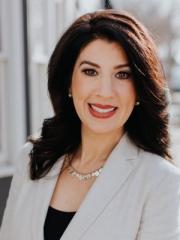
Desiree Chappell
MOM, CRNA and Host of The Roundtable Blog
Board of Directors, American Society of Enhanced Recovery (ASER). A passionate ambassador of Enhanced Recovery and Perioperative Care. Desiree is the creator of the popular Roundtable perioperative care blog: http://periopcareblog.com/
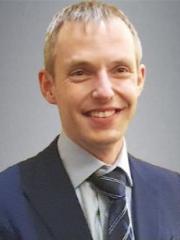
Andy Cumpstey
Andrew Cumpstey trained in general medicine, anaesthesia and intensive care medicine in
Cambridge, Oxford and Southampton. He completed his PhD at the University of Southampton, exploring the effect oxygen therapy has on oxidative stress in major surgery and critical illness.
His research interests include improving clinical outcomes from major surgery and intensive care, translational clinical studies in oxygen physiology and therapy, and physiological changes in extreme environments.
He works clinically in the Southampton region looking after patients having all forms of major surgery or needing intensive care admission. Outside of the hospital, he regularly provides medical, safety and logistical support to expeditions visiting remote mountain and polar regions.
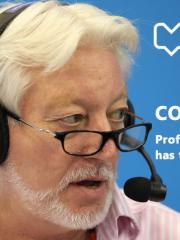
Prof. Monty Mythen
Co Founder and Editor In Chief of TopMedTalk
Monty is the Smiths Medical Professor of Anaesthesia and Critical Care at University College London and Adjunct Professor, Department of Anaesthesiology, Duke University, USA. Monty is also the founding Director of Evidence Based Perioperative Medicine International.
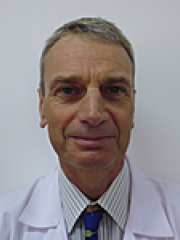
Dr. Sean Bennett
Dr. Sean Bennet, is a cardiac Anesthesia and Intensivist doctor. His main work area was in Yorkshire at Castle Hill Hospital, where he spent 20 years. He went overseas for a while and started a new clinic in the Middle East
He then came back to England and he has been working in the south of England since then.



